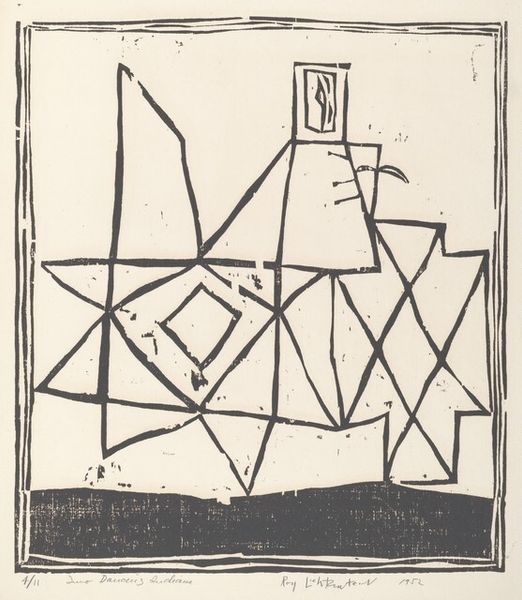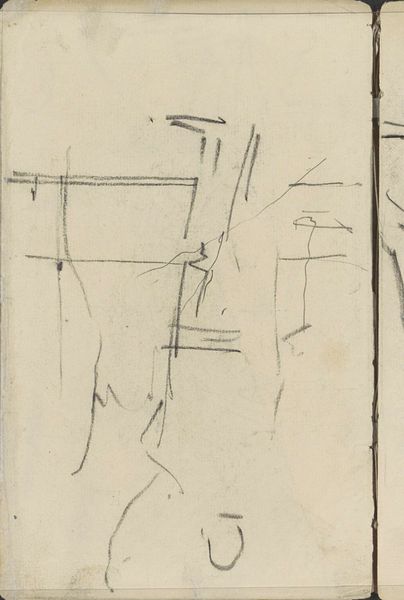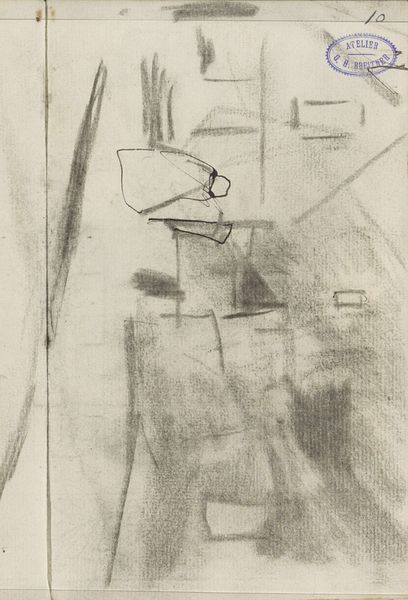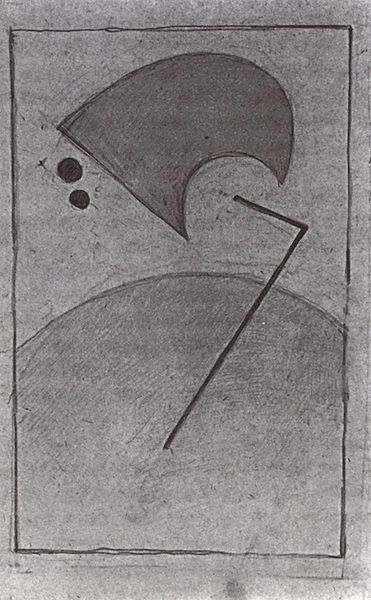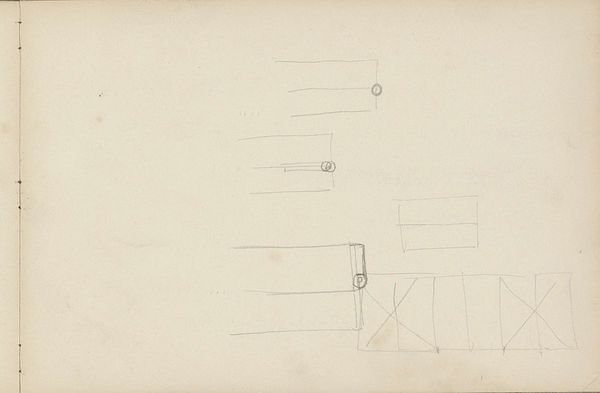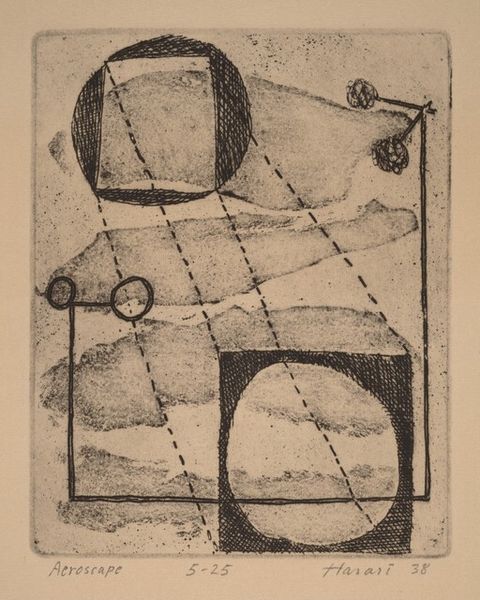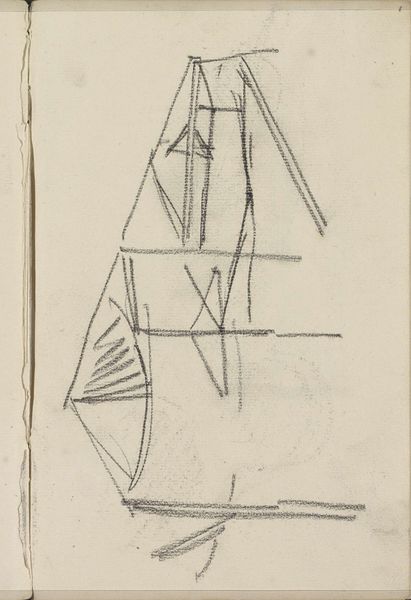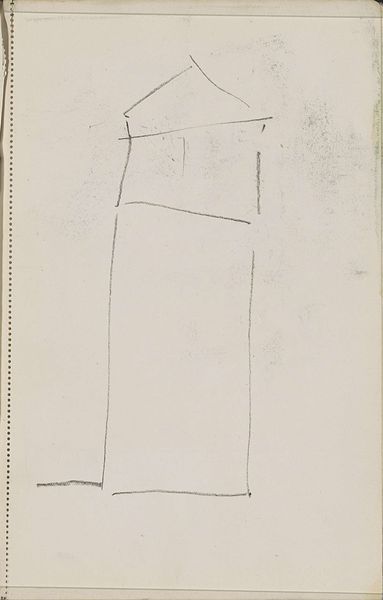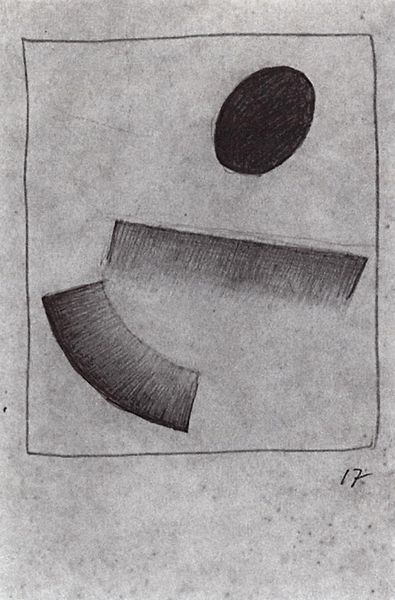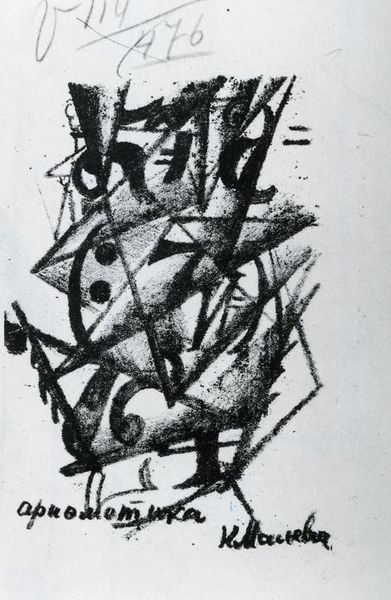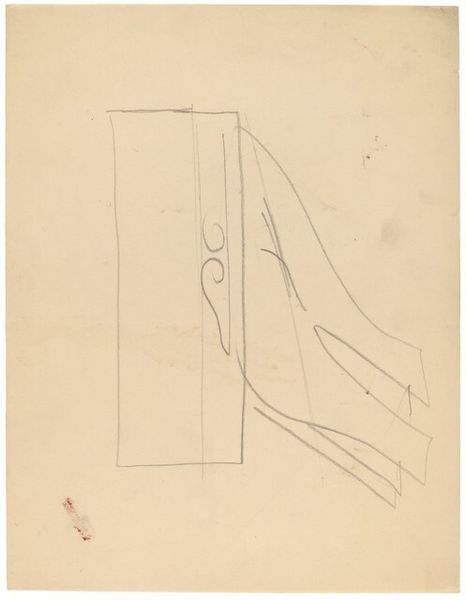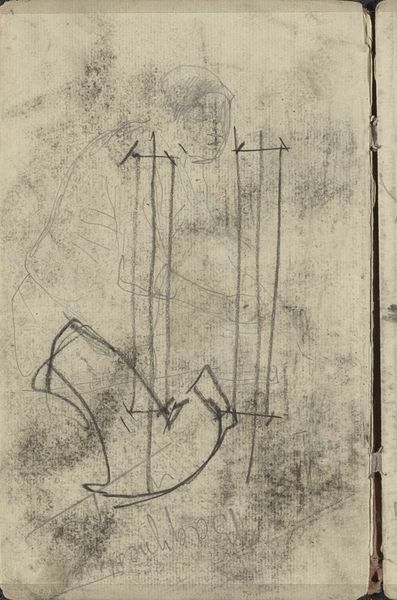
drawing, graphite
#
drawing
#
geometric
#
abstraction
#
line
#
graphite
#
suprematism
Copyright: Public domain
Curator: Here we have Kazimir Malevich's drawing entitled "Suprematism," crafted with graphite. What catches your eye first about it? Editor: Well, immediately I'm struck by the apparent disorder and lack of color. It's predominantly monochrome and composed of various geometric forms that intersect in a chaotic way, making me wonder if the artist is hinting at political or social disarray. Curator: It's certainly a dynamic arrangement of line and form. Consider how Malevich deploys shape—the crisp lines of the rectangles against the soft gradations of the graphite, the precise angles suggesting movement or tension, how the various forms appear to float in the picture plane. Editor: Right, but considering the period during which Malevich was active—marked by the Bolshevik revolution and shifting social structures—can we separate these formal devices from the sociopolitical contexts that shaped their making? I wonder whether that apparent floating hints at feelings of alienation and placelessness felt by people living through displacement and conflict? Curator: One could, of course, analyze the formal components themselves. Consider that by deconstructing objects into their most basic geometric components, the artist effectively eliminates any trace of historical association or established social standing and that perhaps by making the abstract understandable we give voice to revolutionary thought? Editor: But that revolutionary thought must also acknowledge its location within structures of power! It may be that abstraction was only understandable, as you suggest, by some social groups within a much broader society marked by inequalities in wealth, gender, and education. How might abstraction become exclusionary as well as empowering? Curator: It’s a delicate balance to be sure, acknowledging its many facets. These abstract forms, freed from representation, allow for a purified aesthetic experience. Editor: Which may inadvertently mask other dimensions. Ultimately, this drawing exemplifies the rich intersection of abstraction, identity, and social critique, and shows that any object has value depending on your angle of consideration. Curator: Indeed, offering endless avenues for both reflection and discussion through this seemingly simple arrangement of geometric shapes and neutral tones.
Comments
No comments
Be the first to comment and join the conversation on the ultimate creative platform.

